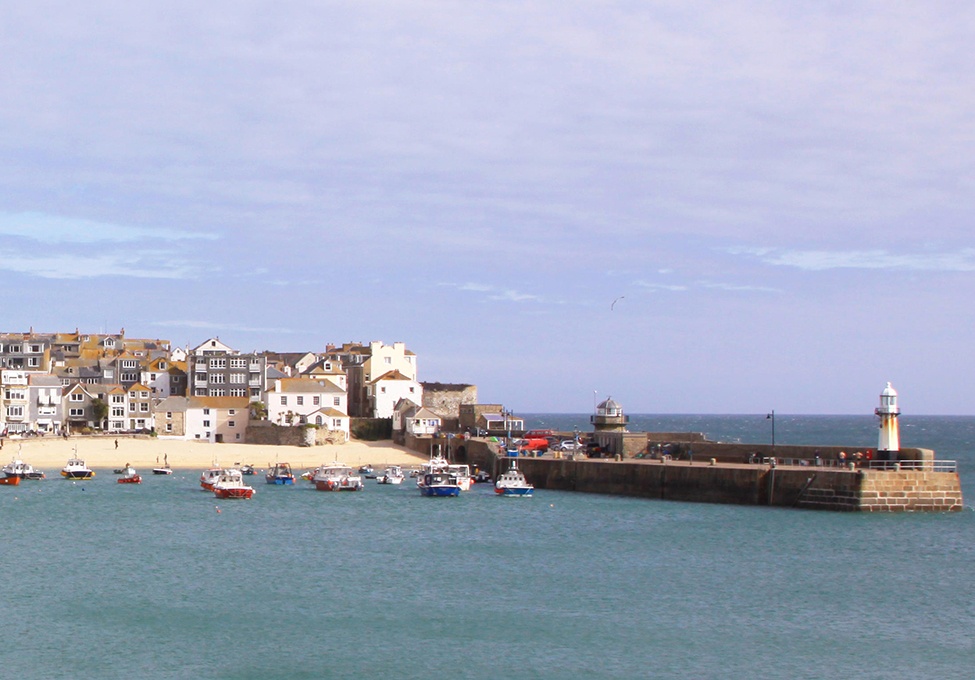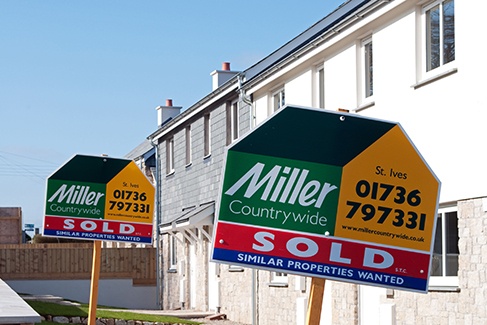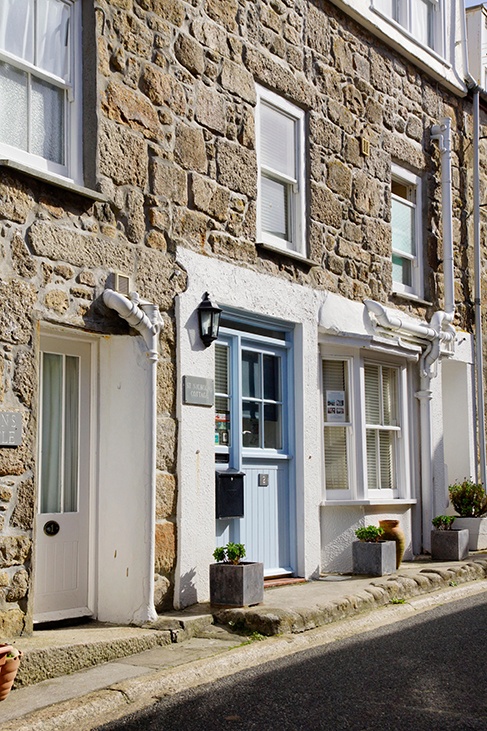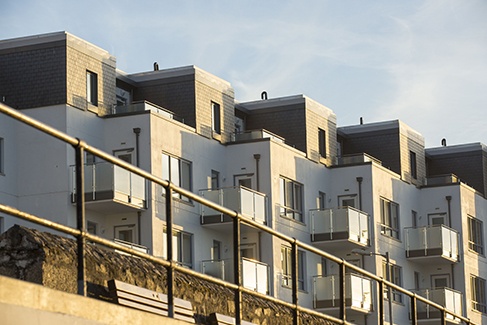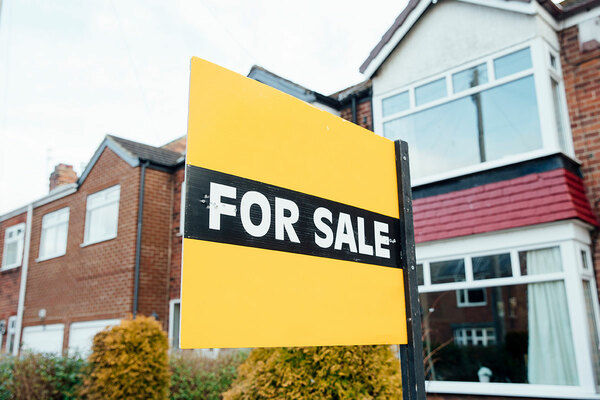You are viewing 1 of your 1 free articles
The St Ives second homes experiment: one year on
This time last year, the people of St Ives voted to limit the sale of new homes to outsiders. Gavriel Hollander travels to Cornwall to find out whether it will help local housing delivery
Video:
features style
The narrow cobbled streets of St Ives seem a long way from the heat and noise of the housing affordability debate forever raging in the urban metropolises, hundreds of miles away to the east and north.
Look beyond the pasties, clotted cream and sandy beaches, however, and there is a battle under way in this Cornish resort that will strike a chord across the country.
Video:
Ad slot
Controversial policy
Exactly one year ago (5 May 2016) people here voted overwhelmingly in favour of adopting the St Ives Area Neighbourhood Development Plan. This 108-page document covers everything from land allocation to sustainable transport and even the protection of some of the vistas that have helped turn an old fishing village into a tourist hotspot.
In the housing section, attention has been focused on a clause restricting the sale of new open-market homes to people who can prove it will be their principal residence.
That clause, known in the neighbourhood plan as H2 and more popularly as the second home ban, was designed to address a problem that has eaten away at the local community for decades: out-of-towners buying holiday homes in the town centre and driving away the priced-out locals.
But the danger is that the H2 clause may be subject to the law of unintended consequences.
“The principles behind what they are trying to do are absolutely sound,” says Chris Weston, director of development and commercial services at Coastline Housing, which owns and manages more than 4,100 homes across Cornwall. “The downside is that developers might develop elsewhere.”
And there’s the rub. The provision has already proved controversial. A legal challenge against the decision by Penzance-based architects RLT Built Environment was only finally seen off in November, while media attention has been extensive enough for Newsnight to send Evan Davis down to the coast to stroll along the beach front in rolled-up suit trousers.
In a nutshell, critics say that the policy represents the wrong solution for a misdiagnosed problem.
“I understand the sentiment behind it but in Cornwall the key gap is between the cost of housing and what people earn,” says Tim Dwelly, leader of the Labour group at Cornwall Council. According to Rightmove, the average sale price for a flat in St Ives is £271,765. As Mr Weston points out, that’s affordable compared with some of the country, but it’s still unaffordable for people here.
“The principles behind what they are trying to do are absolutely sound.”
Chris Weston, director of development and commercial services, Coastline Housing
Figures from the Office for National Statistics show that the average house price in Cornwall was 10.6 times the average salary in 2014.
With a low-wage local economy, the provision of affordable homes for rent is arguably the more pressing housing demand in St Ives.
According to 2015 statistics used as the evidence base for the neighbourhood plan, published by St Ives Town Council, St Ives had 566 people on its housing waiting list, meaning around 54 affordable homes need to be built each year to keep pace with demand. In the past three years, just nine affordable homes have been built.
And what of the claim that H2 will deter developers? Inside Housing asked Cornwall Council how many planning applications for schemes with more than 10 dwellings had been submitted since the principal residence requirement came into effect in December. The answer is none – although no applications for 10 dwellings or more were submitted over the same period of the previous year, either.
Given that developers have been aware of moves to institute a neighbourhood plan since 2014, it’s possible that it has already had a cooling effect on their ambitions. Indeed, back in 2013/14, 12 new affordable homes were built, while the figure was 53 the previous year.
Question of value
Following the referendum, Acorn Property Group’s Cornwall subsidiary, Acorn Blue, put a halt on one local site on which it was about to proceed and has also paused talks on other brown and greenfield developments in light of the neighbourhood plan, which it says is restricting both affordable and open market delivery.
“We were close to exchanging on site and would have built affordable housing at 40%, no questions asked,” says Duncan Powell, group planning director at Acorn Property Group. “The balance would have predominantly been for families living down here, with only a few [sold] as second homes.”
And Mr Powell insists it isn’t only Acorn that has shelved its plans for the area: “They have killed off any delivery of any housing whatsoever.”
The evidence from the council suggests that, so far, this is true. But why? Much of the explanation is about what the provision does to land values.
“H2 has brought into question the end value of open market land,” explains Rachel Gaunt, director at local architects firm Poynton Bradbury Wynter Cole. “For projects that have gone into planning not expecting [to be subject to] the H2 clause, their viability has gone into freefall. Nobody has been prepared to give an opinion on valuation.”
“They have killed off any delivery of any housing whatsoever.”
Duncan Powell, group planning director at Acorn Property Group
This claim is backed up by a locally based valuer. “We base our valuations on comparative evidence and there is very little evidence to go on yet,” explains the valuer, who nevertheless suggests that developments subject to H2 will “come in at less than the market [price] – it’s a more restricted market and the valuations reflect that”.
The valuer echoes the concerns of many people locally: “I don’t think anything will be built for the foreseeable future so the ban will be counterproductive; it will be easier for [developers] to build elsewhere. The net effect could also be that the existing housing stock could go up in value.”
For supporters of the ban, such speculation is purely that.
“It is premature to make any judgments on the impact of the plan on housing delivery, whether it be affordable or open market housing,” counters Rita Lait, a councillor on St Ives Town Council and chair of the Neighbourhood Plan Steering Group. “It is always easy to find people who have opinions on such issues but it is the facts that matter.”
Ms Lait suggests no one will know the true impact of the measures in the neighbourhood plan until the next census, in 2021. But why did the local council and residents (83% of whom voted in favour of adoption) feel so strongly about the second home issue in the first place?
Ruinous change
Last summer, William Thomas, a retired fisherman and former mayor of the town, made the news when he became the last locally born resident of the area known as Downalong to sell up and move. Downalong is a collection of streets sitting in the cranny between the harbour and the surfing hotspot of Porthmeor Beach.
The picturesque fishing cottages here are the epitome of St Ives and, as such, have been increasingly snapped up as second homes and holiday lets over the past two decades.
“St Ives has completely changed in 20 years,” says Andrew George, who served as the town’s MP for 18 years until the 2015 general election. “It’s been a ruinous change; there’s been a whole community lost from this area.”
Mr George, who is now director of the Cornwall Community Land Trust, is a strong supporter of H2. He believes that a realignment of land values will help local people, not halt development.
He describes the neighbourhood plan as “a small step in the right direction”, adding that it will result in “a cooling off of the more speculative developments”.
“St Ives has completely changed in 20 years. There’s been a whole community lost from this area.”
Andrew George, director, Cornwall Community Land Trust
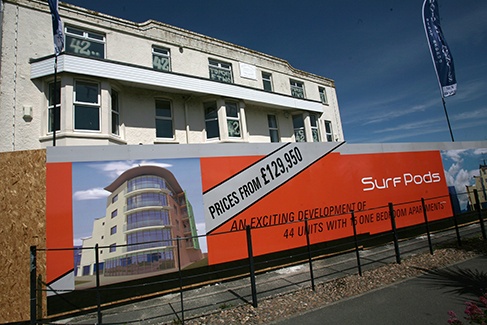
Source: Getty
According to the Office for National Statistics, in 2014 the average house price in Cornwall was 10.6 times the average salary
For Mr George and others, it is the developers, not local buyers, who will have to eventually adjust to a new reality.
“The planning system is fuelled by greed rather than need; it rewards those who use the system to speculate on land values. What this policy is doing in a small way is cooling off the key developments that contribute hardly anything to the local community.
“Developers cannot depend on a market driven by second home purchasers – they will have to look to secure a lower return on their land or a more mixed development.”
Coastline’s Mr Weston agrees that, once the market adjusts, the policy “could open up more opportunities for some [affordable housing] developers if they don’t have to compete for sites”. But he points out that everything Coastline itself has built in the area covered by the neighbourhood plan has been via planning gain, and so relies on open market development.
Stalled sites
Another point raised by Mr Weston and others is the availability of mortgage financing for any purchasers, with lenders likely to become reluctant to lend when there is more uncertainty over end values.
For Ms Gaunt, the net effect of the downsides of the H2 clause far outweigh any good it might achieve.
“The clause is based on naivety; it’s being used like a machete when we need an asparagus fork,” she says. “It should be used so that people can live in St Ives in a place that is appropriate, but the new build [housing that will be hit by the ban] is all out of town.”
Ms Gaunt shows Inside Housing two stalled sites in Carbis Bay, a short drive from the centre of St Ives. Here, plans are in place for more than 60 homes, few of which would be likely to have become second homes. They are a far cry – both geographically and aesthetically – from the old cottages of Downalong. But nothing is happening as developers wait to see how the neighbourhood plan plays out.
“We are using this clause to try and limit something that has already happened and in places where it is not a problem,” says Ms Gaunt. “These sites are on the edge of town; they already have a full armoury of risk. If you add the H2 clause you are reducing the number of people who can buy the property and you are reducing their value.
“If the real thing you want to achieve is to increase the amount of affordable housing, then this makes no sense at all. Forty per cent of zero is zero.”
One word that crops up repeatedly in this debate is nimbyism. There is a feeling among some that locals and newcomers already on the property ladder wouldn’t mind too much if developers found it harder to get planning permission, whether for affordable housing or anything else.
As Mr Dwelly puts it, “there are strong nimby forces here”.
Nagging feeling
Mr Weston is kinder about the motivation behind the move, however. “It’s not about nimbyism,” he insists. “It’s about ensuring that local people can compete in the [housing] market on local wages.”
But local wages won’t be boosted by changing planning policy.
Back in the town centre, in an illustration of the local economy, the Coffee Lounge café shares a space and staff with holiday letting agency Cornish Gems.
“It’s not about nimbyism. It’s about ensuring that local people can compete in the [housing] market on local wages.”
Chris Weston, director of development and commercial services, Coastline Housing
A waitress here sums up people’s frustration with the housing market: “People can’t afford these places so locals don’t live here. Every house is a holiday let. But that’s all part of the industry down here: we thrive on tourism. It’s always been like that.”
With two more town councils in Cornwall set to vote on their version of H2 at the time of going to press, there is clearly momentum behind this sort of intervention. Yet for many, there is a nagging feeling that policymakers have identified the wrong cure.
“It’s a case of social engineering,” concludes Ms Gaunt. “And social engineering rarely works.”
